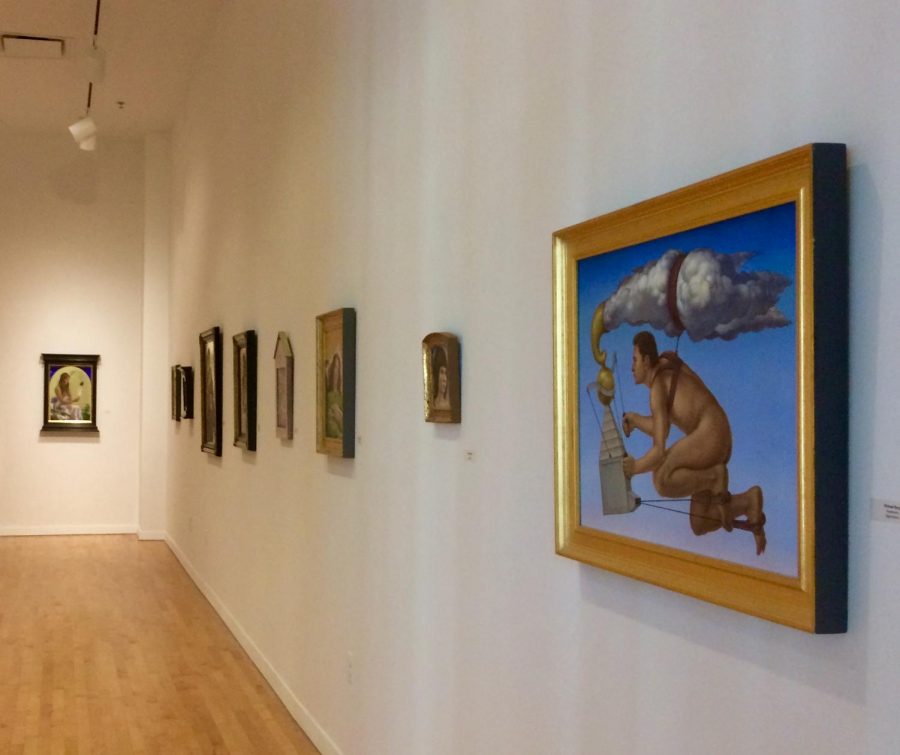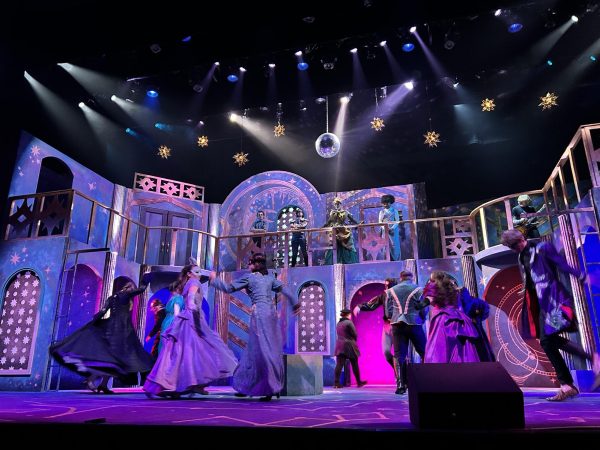On-campus art exhibit considered “one of the most magnificent” shown by department
On the ground floor of UNC Wilmington’s Cultural Arts Building, a small art gallery hosts short-term exhibits throughout the year. These exhibits range in size, scope, expense and style, but the current exhibit “Art from the Egg: Five Tempera Painters” is being considered one of the best in recent history.
The exhibit comprises collected works by five prominent tempera painters, who explore the ancient technique and create paintings that reminisce on the appearance of the tempera style 500 years ago, but in a modern context, influenced by more contemporary styles.
Tempera paint, as it is referred to in this exhibit, is different from the washable tempera paint one might find in a regular craft store. The craft store paint is simpler to use than the traditional tempera paint composed of small amounts of pigment, water and egg yolk.
Tempera painting is an ancient, extremely complicated and difficult painting process. Unlike the more popular oil or acrylic paints, tempera paints are usually made on site by the artist and are translucent. This means that an opaque, detailed image like the ones in the exhibit require potentially hundreds of hours of labor and innumerable layers of paint to create the jewel tones that have become the hallmark of this painting style.
“This show, curated by Professor Don Furst, is one of the most magnificent shows ever presented by UNCW’s Department of Art and Art History,” said Dr. Amy Kirschke, chair and professor of art history in the Department of Art and Art History. “It has been an exciting and educational experience for even the most seasoned art historians, artists and students!”
Dr. Kirschke praised the work of Professor Furst — a studio art professor who also works as the director of the Cultural Arts Building’s gallery. “Art from the Egg” is his brainchild.
Professor Furst began dreaming of the exhibit two years ago, but he began contacting individual artists to loan pieces last year. The exhibit comprises pieces from artists’ own studios, private collectors and galleries.
“I am biased, but will say that in my 40-year career as an art faculty member and sometime-gallery director, this show is in my all-time favorite three or four,” said Professor Furst, who also invoked “curator’s privilege,” as he called it, to incorporate one of his own small pieces in the exhibition.
“The 65 layers of paint in [Furst’s] own piece, employed to create a magnificent blue sky, is a great example of the patience and skill required to create Art in Tempera,” said Dr. Kirschke.
On the department’s website, a short description can be found of this exhibit as well as the others on the 2017-18 docket.
“Clarity of form and luminous translucent color are hallmarks of the egg tempera medium, which enjoyed its golden era during the early Renaissance,” it reads. “A relatively small number of contemporary artists still employ this venerable technique, typically in small, jewel-like figurative images.”

In the Renaissance 500 years ago, this style was king. Its translucent properties allow for artists to layer different colors to create extremely unique but accurate tones, relative to reality. These Renaissance artists then typically embellished their works with gold leaf, an expensive but brilliantly beautiful technique.
The artists in “Art from the Egg” looked to the past for their artistic cues. Koo Schadler, an artist represented in the exhibit and whose works sell for thousands of dollars, has become famous for creating Renaissance-style tempera paintings, like her detailed portraits surrounded by a background of gold leaf. A number of these such paintings can be found in “Art from the Egg.”
On view between Oct. 12 and Nov. 10, “Art from the Egg” had its opening reception Thursday, Oct. 12 from 5:30 to 7 p.m. It includes pieces from Michael Bergt, Koo Schadler, Fred Wessel, and the duo Scherer & Ouporov, as well as UNCW’s Professor Furst.
The gallery is open Monday through Friday, noon to 4 p.m.













